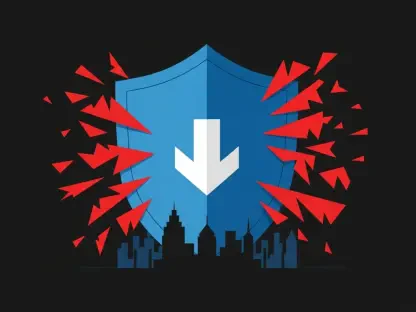In the intricate and ever-shifting landscape of insurance, fraud has emerged as a formidable adversary, transforming from rudimentary scams into complex operations that mirror the sophistication of organized crime. What was once limited to staged accidents or exaggerated claims has now expanded into a multi-faceted threat, impacting sectors ranging from healthcare to property-casualty insurance. This evolution poses significant challenges not only to insurers but also to policyholders, who often bear the burden through escalating premiums and compromised trust in the system. The battle against fraud has become a high-stakes endeavor, requiring constant vigilance and adaptation. As criminals leverage cutting-edge tools to exploit vulnerabilities, the insurance industry is responding with a dynamic blend of technological innovation and strategic alliances. This article delves into the dramatic shifts in fraud tactics, examines the dual role of technology as both a tool for deception and a mechanism for defense, and highlights the pivotal role of collaboration in safeguarding the integrity of the insurance sector.
Shifting Tactics of Modern Fraudsters
The landscape of insurance fraud has undergone a profound transformation over recent decades, moving far beyond the simplistic schemes of the past, such as staged slip-and-fall incidents or faked car accidents. Today’s fraudsters operate with a level of sophistication that rivals legitimate enterprises, targeting a broad spectrum of industries including banking, healthcare, and disability insurance. Their ability to adapt is striking—whenever a new defense mechanism is introduced, these criminals pivot, identifying fresh vulnerabilities to exploit. This relentless adaptability creates a constant challenge for insurers, who must anticipate and counter ever-evolving strategies. The financial stakes are immense, as fraud not only drains resources but also undermines the trust that underpins the insurance model. Understanding this shift is crucial for grasping the scale of the problem and the urgency of developing robust countermeasures to protect both insurers and their clients from mounting losses.
Another dimension of this evolving threat lies in the globalization and interconnectedness of fraudulent activities, which have amplified their reach and impact. Fraudsters no longer operate in isolation; they form networks that span multiple sectors and regions, sharing tactics and resources to maximize profits. This organized approach allows them to exploit systemic weaknesses, such as automated claims processing, with precision and scale. For instance, small, frequent claims that evade manual scrutiny can accumulate into significant illicit gains over time. The complexity of these operations often mirrors that of corporate structures, complete with hierarchies and specialized roles. This trend underscores the necessity for insurers to adopt a proactive stance, moving beyond reactive measures to anticipate potential threats. By studying these patterns, the industry can better prepare for the next wave of deception, ensuring that defenses remain one step ahead of increasingly cunning adversaries.
Technology’s Dual Role in Fraud and Defense
Technology stands at the heart of the modern insurance fraud battle, serving as both a potent weapon for criminals and a critical shield for insurers. Fraudsters have embraced advancements like artificial intelligence (AI) to create synthetic identities, falsify medical records, and even generate deepfake media that can deceive automated systems. These digital tools enable the submission of numerous low-value claims designed to slip under the radar of manual reviews, resulting in substantial profits over time. The accessibility of such technology has lowered the barrier for entry, allowing even less experienced criminals to execute sophisticated scams. This growing reliance on digital deception has reshaped the fraud landscape, making detection more challenging and forcing the industry to rethink traditional approaches to identifying and mitigating risks posed by tech-savvy perpetrators.
Conversely, insurers are harnessing the same technological advancements to bolster their defenses against these sophisticated threats. AI-driven behavioral analytics and data science models are now integral to detecting suspicious patterns in claims data, enabling the flagging of potential fraud before payments are processed. These systems can analyze vast amounts of information in real time, pulling questionable claims out of automated streams for closer human scrutiny. However, while technology offers powerful capabilities, it is not a complete solution. The nuanced nature of fraud often requires human judgment to make final determinations, as algorithms may misinterpret legitimate claims or fail to catch subtle red flags. This interplay between automated detection and expert analysis forms a critical balance, ensuring that insurers can respond effectively to the technological tricks employed by fraudsters while minimizing errors that could harm genuine policyholders.
Partnerships as a Pillar of Prevention
Collaboration between insurers and their clients has emerged as a vital strategy in the fight against increasingly complex insurance fraud. By fostering a shared responsibility, insurers are educating both claims professionals and customers on recognizing the warning signs and mechanisms of deceptive practices. This educational approach empowers stakeholders at every level to act as a first line of defense, identifying potential issues before they escalate into significant losses. Such initiatives also build trust, as clients see insurers not just as service providers but as partners invested in their protection. This united front is essential for tackling fraud’s pervasive reach, as it ensures that information and best practices are disseminated widely, creating a network of vigilance that can deter criminals from exploiting unsuspecting businesses or individuals.
Moreover, direct engagement with clients takes this collaboration to a deeper level, often involving tailored solutions to specific vulnerabilities. For example, insurers may deploy investigators to work on-site with high-risk clients, addressing unique challenges in real time, or provide actionable advice on securing valuable assets against theft. These partnerships extend beyond mere consultation, fostering a proactive culture of prevention that benefits the entire industry. By controlling fraud-related losses, insurers help stabilize premiums, which in turn supports economic stability for businesses and policyholders alike. This collaborative model also encourages the sharing of data and insights, enabling the identification of emerging trends and the development of more effective countermeasures. Ultimately, this synergy between insurers and clients reinforces the idea that fraud prevention is not a solitary effort but a collective endeavor requiring commitment from all parties involved.
Tailored Approaches to Specific Fraud Challenges
Certain types of insurance fraud exhibit predictable patterns, allowing insurers to implement targeted strategies that address specific risks with precision. Cargo theft, for instance, often spikes during economic downturns or around seasonal peaks like the holiday period, when high-value goods such as toys or electronics are in transit. By leveraging data analytics, insurers can identify high-risk areas or times and advise clients on preventive measures, such as avoiding certain routes or enhancing security with tracking devices and reinforced locks. These customized recommendations demonstrate the value of informed, proactive action in reducing exposure to loss. The ability to anticipate and mitigate these threats not only protects individual businesses but also contributes to broader industry resilience by curbing the financial impact of systematic fraud.
Beyond seasonal or economic correlations, tailored strategies also involve adapting to the unique needs of different sectors vulnerable to fraud. For example, healthcare fraud may require specialized detection models to spot fabricated medical claims, while property-casualty insurance might focus on verifying the authenticity of damage reports. Insurers are increasingly using predictive analytics to stay ahead of these sector-specific challenges, identifying patterns that signal potential deception before significant damage occurs. This approach allows for the allocation of resources where they are most needed, ensuring that prevention efforts are both efficient and effective. By focusing on the distinct characteristics of each fraud type, the industry can develop a more nuanced understanding of criminal behavior, leading to smarter interventions that safeguard assets and maintain trust among stakeholders across diverse fields.
Harmonizing Tech and Human Expertise
The ongoing struggle against insurance fraud demands a delicate balance between technological innovation and human expertise, as neither can fully address the challenge alone. Advanced tools like AI and machine learning offer unparalleled speed in processing claims data, identifying anomalies that might indicate fraudulent activity with remarkable accuracy. These systems can sift through millions of transactions in moments, flagging inconsistencies that would take human analysts far longer to detect. Yet, their limitations are clear—algorithms lack the contextual understanding and intuition needed to interpret ambiguous situations or uncover fraud that falls outside predefined patterns. This gap highlights the need for a hybrid approach, where technology serves as a powerful first filter, but human oversight ensures that final decisions are grounded in experience and critical thinking.
This balance is particularly evident in the way insurers integrate automated systems with trained investigators who bring a deep understanding of fraud’s subtleties to the table. While technology can highlight potential red flags, it often falls to human experts to piece together the full story, distinguishing between genuine errors and deliberate deception. This synergy maximizes efficiency without sacrificing accuracy, allowing the industry to keep pace with increasingly sophisticated fraudsters. Furthermore, human insight is crucial for refining technological tools, as feedback from investigators helps improve algorithms over time, ensuring they remain relevant against evolving tactics. By harmonizing these two elements, insurers create a robust defense mechanism that not only addresses current threats but also adapts to future challenges, preserving the stability and trustworthiness of the insurance ecosystem.
Building a Resilient Future Against Fraud
Reflecting on the journey of combating insurance fraud, it’s evident that the industry stood at a critical juncture in recent years, facing threats that grew in both complexity and scale. Insurers responded with remarkable agility, adopting advanced technologies and forging stronger partnerships to counter sophisticated schemes that once seemed insurmountable. The integration of AI and data analytics marked a turning point, as did the emphasis on educating clients and claims professionals to recognize deceptive patterns. These efforts, combined with targeted strategies for specific risks like cargo theft, showcased a determination to protect both financial resources and public trust. Looking back, the collaborative spirit and innovative drive displayed during this period laid a strong foundation for ongoing resilience.
Moving forward, the focus must shift to sustaining this momentum through continuous improvement and vigilance. Insurers should prioritize the development of even more refined technological tools, ensuring they evolve alongside criminal tactics. Strengthening alliances with clients and industry stakeholders will remain essential, as shared knowledge and resources can amplify prevention efforts. Additionally, investing in training for human analysts will guarantee that the critical element of judgment keeps pace with automated systems. By anticipating emerging trends and preparing for new vulnerabilities, the insurance sector can build on past successes to create a future where fraud is not just managed but significantly diminished, securing a safer and more reliable environment for all.









